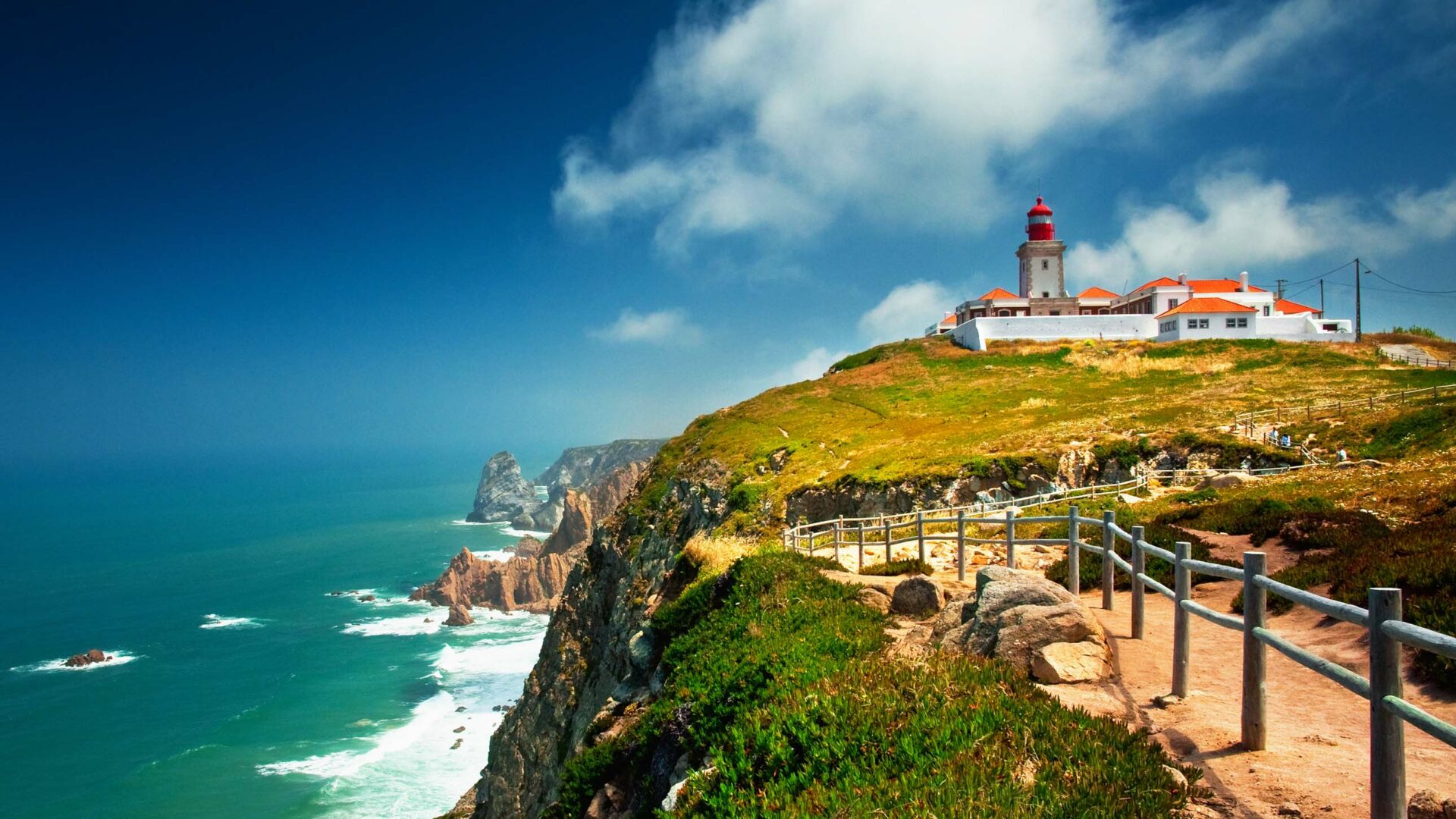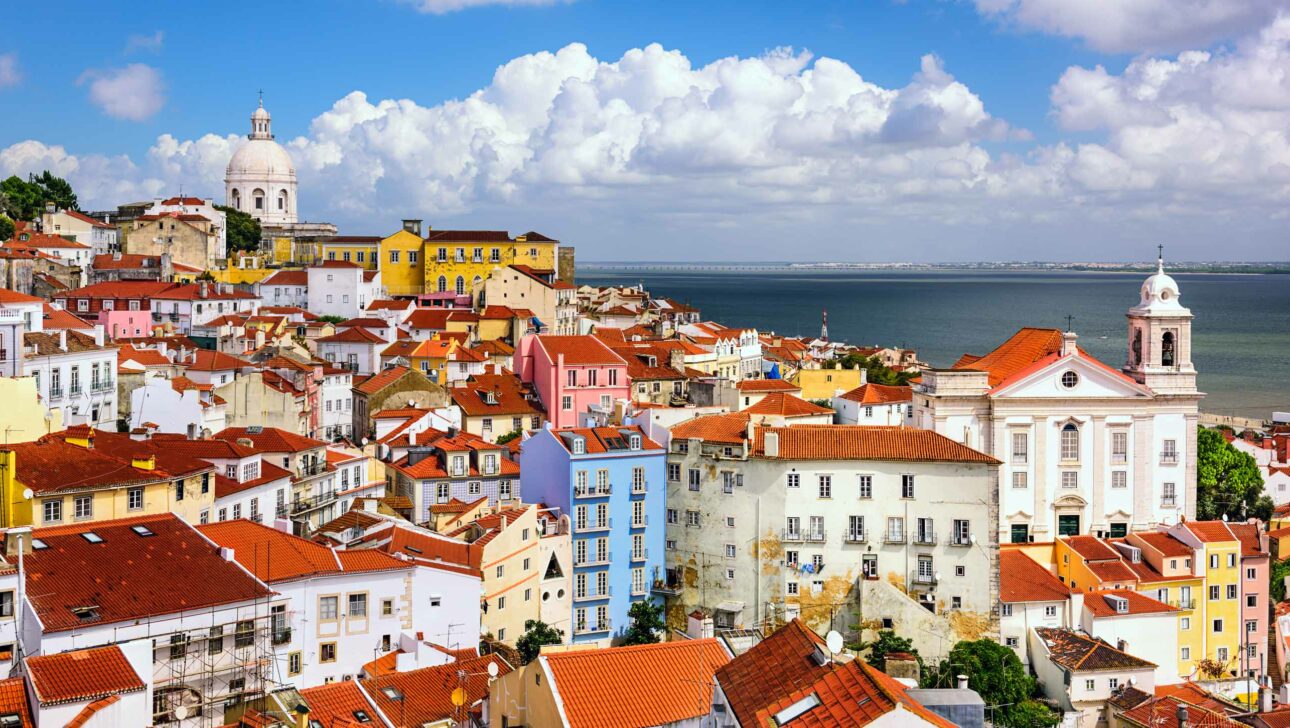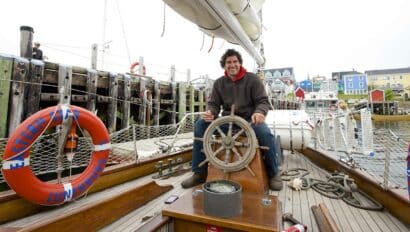Portugal beckons travelers with its regal cities brimming with color, its bucolic countryside, quality yet inexpensive port wine paired with the freshest seafood from the Atlantic, and more days of sunshine per year than any other European country. Lisbon and Porto, two of Europe’s oldest cities, are filled with picturesque historical landmarks and decadent boutique hotels ideal for getting a great night’s rest, but the country offers so much more. Here are our top ten sights to see in Portugal:
#1 Lisbon
No Portugal adventure is complete without exploring Lisbon with its iconic pastel buildings, sweeping coastal vistas, and the tradition of Fado music. It effortlessly blends its powerful history with a clear idea of the type of modernity they want to cultivate. It’s the type of destination that lures you into leisurely afternoon walks, long chats with friendly shopkeepers, and relaxed evenings sipping local wines.
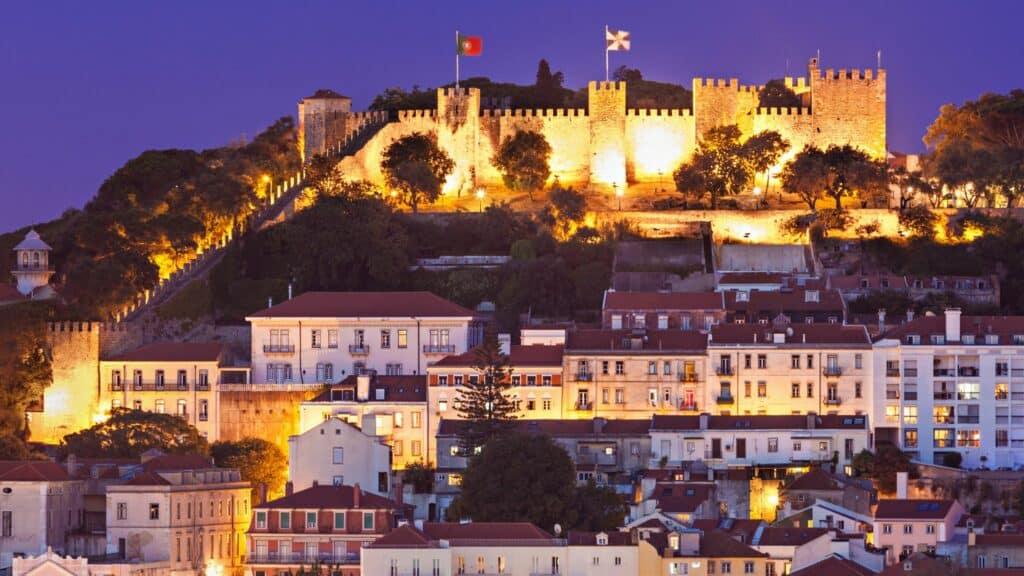
#2 Belém Tower
Belém Tower is a 16th-century fort on the northern bank of the Tagus River. It was acknowledged as a World Heritage Site in 1983 by UNESCO. This tower was used to defend the city and then became a lighthouse and customs house. The ground floor has windows equipped with canons and even pits and holes where prisoners were thrown. There are five floors, all connected by a narrow spiral staircase that leads to a roof terrace with impressive views. Keep your eyes peeled on the western façade for a surprising gargoyle of a rhinoceros – the first rhino set foot in Portugal in 1513 from India and the tower started construction just a year after.
#3 Jerónimos Monastery
The Jerónimos Monastery, aka Hieronymites Monastery, is a UNESCO World Heritage monument and beautifully demonstrates Portugal’s power and wealth during the Age of Discovery. The monastery is one of the most prominent examples of the late Portuguese Gothic Manueline style of architecture. King Manuel I had it built in 1502 to commemorate Vasco Da Gama’s voyage overseas to India and to give thanks to the Virgin Mary for its success. Vasco da Gama has a tomb here, as does King Manuel, King Sebastião, and poets Luis de Camões, Fernando Pessoa, and Alexandre Herculano. The opulent monastery was later inhabited by monks of the Order of Saint Jerome (Hieronymites), whose offering was to give spiritual guidance to sailors and pray for the king’s soul.
#4 Castelo de S. Jorge
This gorgeous castle is on the summit of São Jorge hill – the highest in Lisbon – and offers panoramic views of the city and the river. A small fortress was built by the Visigoths during the fifth century, was modified by the Moors in the mid-eleventh century and during the reign of Afonso I of Portugal (1109 – 1185), Portugal’s first king, it transformed into a Royal Palace. Most of the castle was destroyed in the Great Earthquake of 1755, but a long extension of walls and 18 towers were restored in 1938 after being declared a National Monument in 1910. Recently, Phoenician, Greek, and Carthaginian ruins were uncovered in the area. Guests can climb the towers and meander along the ramparts for picture-worthy views of Lisbon.
#5 Porto
Porto, the second-largest city in Portugal, is a city of contrasts. At once both edgy and elegant, modern and medieval, travelers can explore centuries-old baroque architecture by day and contemporary petiscarias (Portuguese-style tapas bars) and live music by night.
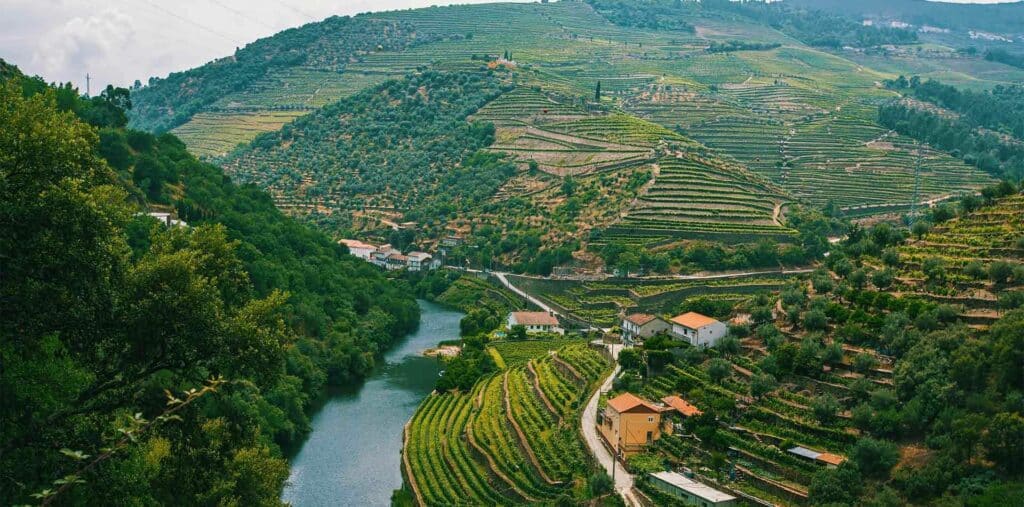
#6 Wine Tasting in Douro Valley
It’s easy upon arrival to start fantasizing about moving here in a quest to try the more than 200 different grape varieties that make up the wine produced in the oldest demarcated wine region in the world. Deep valleys were carved out of the mountainside by the river and with knowledge handed down over centuries, vines have been planted on lush terraces to take full advantage of the sun – helping craft everything from lighter, Bordeaux-style claret to big, rich Burgundian-style oak-aged wines. Tastings usually take place in gorgeous historical buildings that have been in the same family for generations, or while lounging under the luxurious shade of cork wood trees.
#7 Luís I Bridge
The impossible-to-miss double-decker bridge built between 1881 and 1886 spans the Douro River linking the Port wine houses of Vila Nova de Gaia with the cosmopolitan downtown Ribeira district of Porto. One part of the bridge is on top of the arch and another is suspended below it – the top now carries the Porto Metro trains and has a pedestrian walkway 190 feet above the river, making the foot crossing a memorable experience, not for the faint of heart with heights. The bridge was designed by Téophile Seyrig who previously worked alongside Gustave Eiffel of Eiffel Tower fame.
#8 Livraria Lello
Rumors abound that J.K. Rowling’s inspiration to write Harry Potter began with her time spent at this bookstore and it’s not difficult to imagine that being true – the magical library in Harry Potter does bear a shocking resemblance. Opened in 1906, the bookshop was constructed in Gothic style and has become one of the top sights to see in Portugal. Inside there is the most Instagrammable staircase in the country as well as a large stained glass window on the ceiling with the words ‘decus in labore’. This was the Lello brother’s motto, meaning ‘honor in work’. Don’t just take our word for it – Travel + Leisure magazine considered Livraria Lello as the coolest bookshop in the world. Time magazine, The Guardian, and Lonely Planet all gave it a designated spot on their list of one of the most beautiful bookstores in the world.
#9 Sintra & Pena Palace
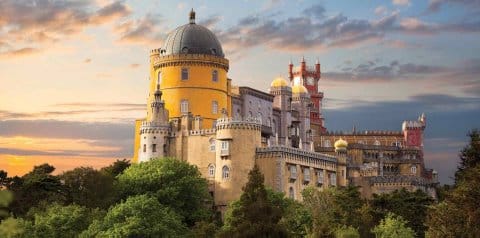
The Palace of Pena was classified as a National Monument in 1910 and ranks as the single most important site in the Cultural Landscape of Sintra, classified by UNESCO as World Heritage in 1995. Ferdinand II, King-consort at the time, was easily one of the more cultured men of the 19th century. He spoke seven languages, music and drawing were critically important in his life, and he always maintained a profound connection with the arts as an artist, collector, and sponsor. He became known as Portugal’s King-Artist. He fell in love with the Sintra region and acquired the Monastery of Saint Jerome as well as all the surrounding land. In a full celebration of Romanticism, the king created labyrinthic paths that take guests to some epic views and he also planted tree species from every continent, making the almost 200 acres of the Park of Pena the most important arboretum existing in Portugal.
#10 Portugal’s Stonehenge: Almendres Cromlech

Imagine getting to visit something reminiscent of Stonehenge, but with hardly any tourists, the ability to walk freely through the site (and even be able to touch it), and then find out it is thousands of years older than its UK counterpart. Built between 5000 and 4000 BCE, the Almendres Cromlech are the strongest examples of Neolithic structures on the Iberian Peninsula, and they somehow remained undiscovered until 1966. The site is made up of several classic megalithic structures, primarily cromlechs, and menhir stones all arranged in patterns of two concentric rings. Although the original function isn’t clear, a bond between agriculture and herding is suggested. Late Professor José Hermano Saraiva believed that the piercing of the earthly womb with stone phalluses was some sort of pagan offering to the fertilization of the earth with cultivation in mind. In 2015, it was reclassified as a National Monument and it is now an important part of the Megalithic Circuit in Evora and Alentejo.
